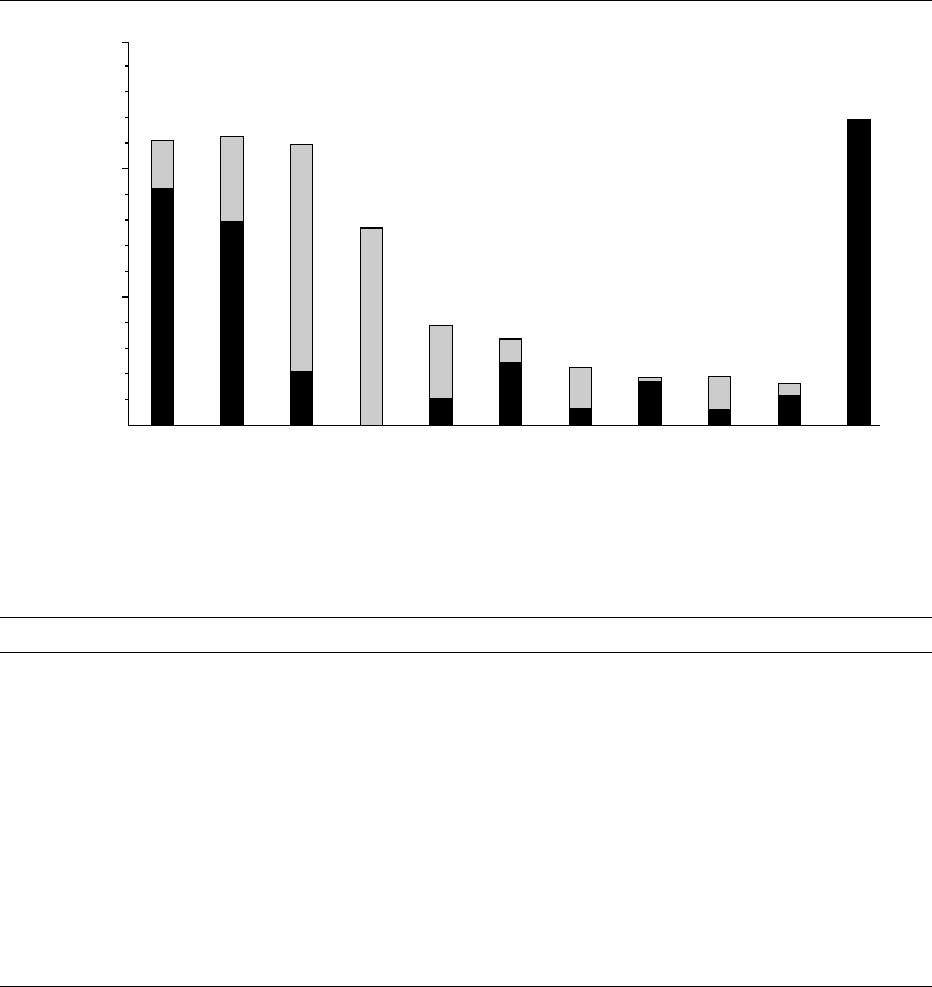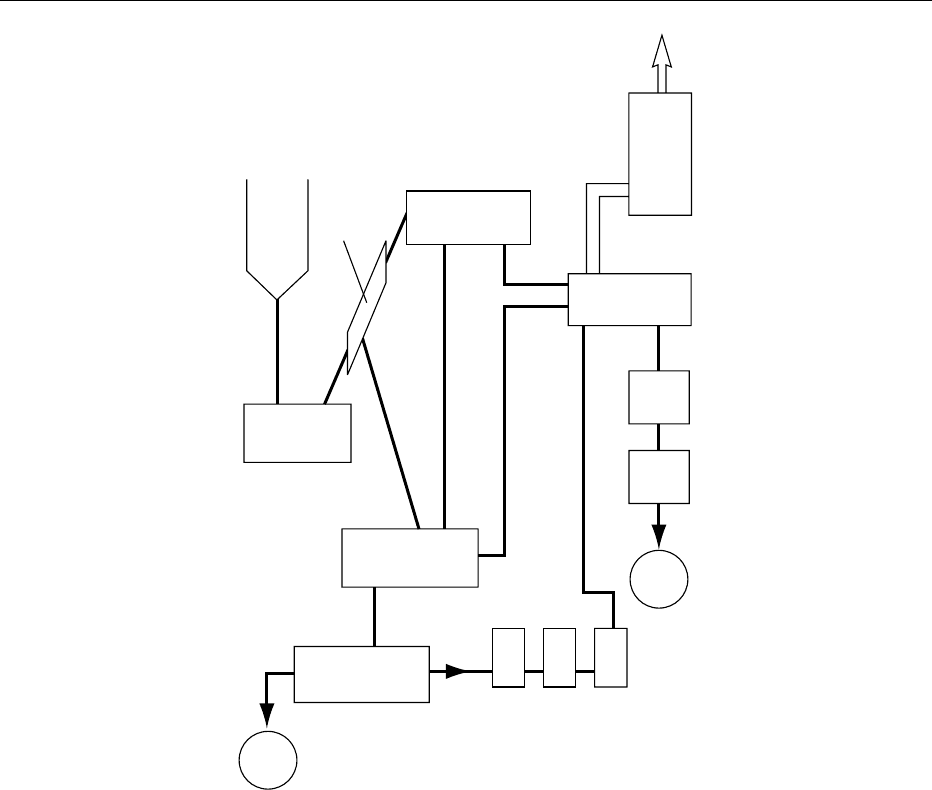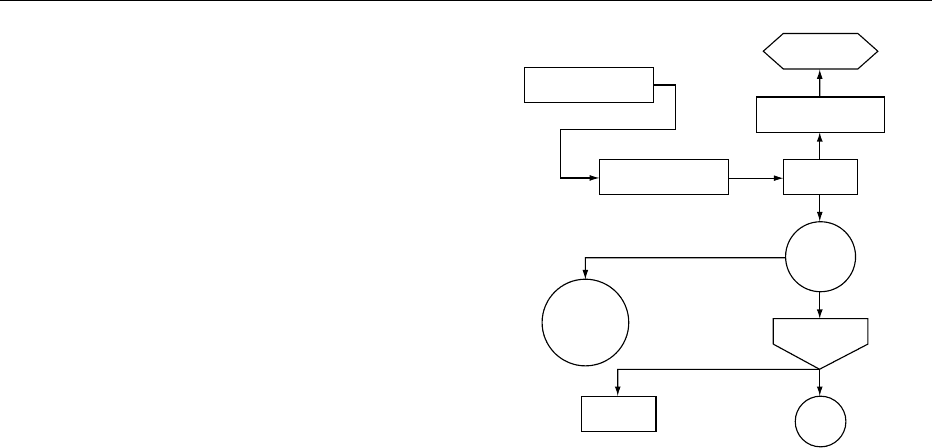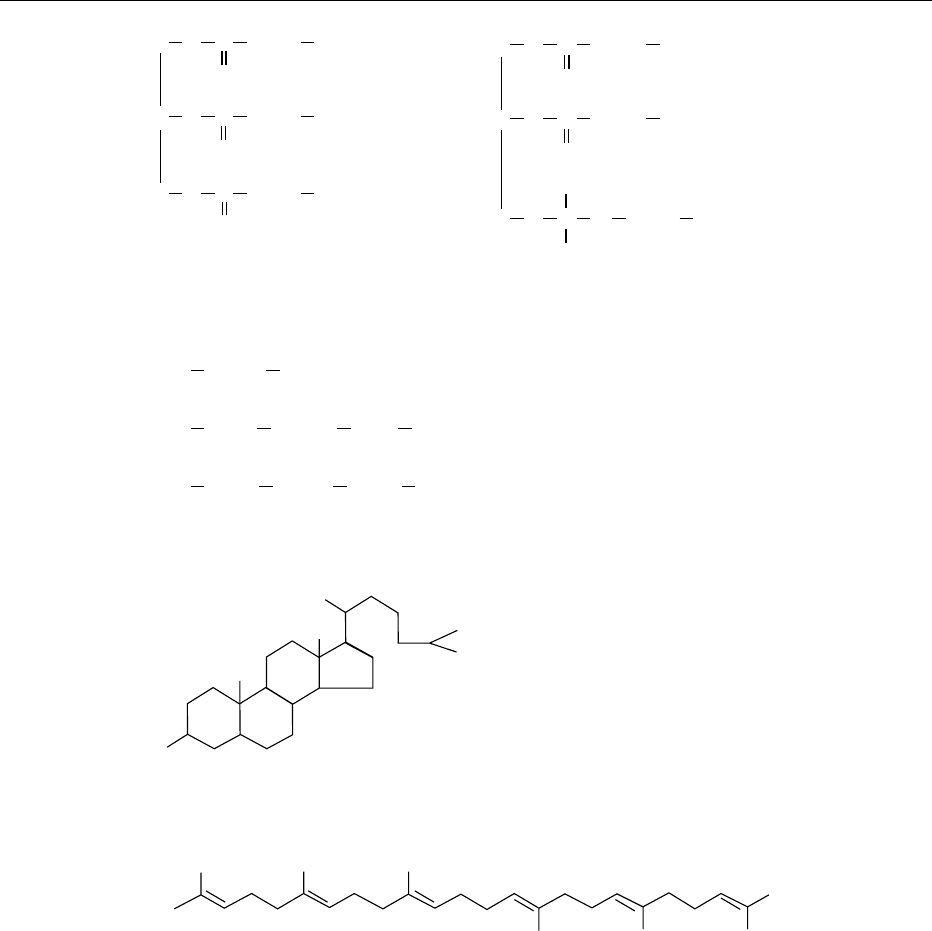Caballero B. (ed.) Encyclopaedia of Food Science, Food Technology and Nutrition. Ten-Volume Set
Подождите немного. Документ загружается.


lactating pigs also have a minimum fish meal level of
about 4% in most diets. Finisher pig diets (> 50 kg)
probably have no minimum constraint. However,
in circumstances of large availability of supplies of
fish meal at relatively low prices compared with
vegetable proteins, such as in the main fish meal-
producing countries of South America, when it is
economically advantageous to include fish meal, a
constraint is normally placed upon the maximum
level of fish meal to be used in order to ensure that
no fishy taint is imparted to the pig flesh. For a high-
fat fish meal containing > 10% of fat is is not unusual
to see a maximum constraint of 5% in finishing diets.
(See Pork.)
Fish
0011 The principal cultivated fish species using fish meal in
their diet are prawns, salmon, eels, trout, and yellow
tails, i.e., mainly the marine carnivorous species.
These do not use vegetable proteins efficiently, espe-
cially if they are fast-growing. Fish meal content of
salmon diets is believed to average 45%, with slightly
higher inclusion in diets for Atlantic salmon than for
Pacific salmon. In prawns a typical fish meal content
in the diet would be about 30%; the level of incorpor-
ation for trout would be 35% and for eels about
50%. (See Fish Farming.)
Fur-Bearing Animals
0012 Fish meal is commonly used in mink feeding. The
amount of fish meal used varies, but up to 60% of
the protein can originate from fish meal provided that
the meal is of high quality. Antioxidant-stabilized fish
meal, or low-fat fish meal prepared from fresh fish, is
preferred.
Ruminants
0013 Fish meal fed at relatively low levels (0.75 kg day
1
)
to high-yielding dairy cows (over 251 per day) has
been shown to increase the milk yield significantly.
The effect has been particularly pronounced with
high-forage diets, especially with grass silage as the
main forage source. Probably of greater economic
significance is the fact that dietary fish meal increases
the reproductive performance of the dairy cow. For
example, conception rates have been shown to
increase from 44% to 64%. This increases calving
frequency and milk production.
0014 Fish meal also has a role in the diets of sheep,
improving productivity and product quality and re-
ducing production costs. It has been found to be
particularly important during the last 2–3 weeks of
pregnancy for ewes given mainly roughage diets,
during the first 5–6 weeks of lactation when body
fat in the ewes can help to sustain a large milk pro-
duction, as a feed supplement in high-energy diets for
fattening of early weaned lambs, and for older lambs
on high-roughage diets. Finally, it has been found to
be useful in manipulating body fat stores, thus redu-
cing excess body fat prior to going to market.
0015In diets for beef cattle, especially those on high-
forage diets, fish meal (200–400 g day
1
) increases
growth rate. It has been recently shown to provide a
means of increasing lean growth at the expense of
body fat, which decreases in over-fat finishing cattle
on only poor roughage plus fish meal. (See Beef.)
Source of Raw Material
0016The main producing and exporting countries of fish
meal are shown in Figure 1. South America, Japan,
the former Soviet Union and the Scandinavian coun-
tries are the main producers. These same countries,
with the exception of Japan and the former Soviet
Union, are the major exporters.
0017The principal species of fish processed into meal
and oil in these countries are listed in Table 2, to-
gether with the name commonly used (sometimes
erroneously) in the fish meal trade to describe these
types of fish meal.
0018One of the distinguishing features of the fish meal
industry, compared with other sectors of the fishing
industry, is the ability to process large volumes of fish
in a short time. A company in South America could be
processing 250 000 t of fish in a year and, because of
the seasonal nature of the fishing, the storage capacity
of the plant would be greater than 1000 t of fish.
0019Because ambient temperatures in the north of Chile
and in Peru are relatively high, it is necessary to have
the capacity to process the stored fish in 24 h or less.
Fish stored at 30
C will soon turn into a hydrolyzed
liquid, resulting in considerable losses of raw material
and reducing the yield of the meal. In addition, the
quality of the meal produced by such stale fish is
poorer than that produced from fresh fish, resulting
in poorer performance from livestock fed on the
resultant meal. Most manufacturers now monitor
the freshness of raw material by measuring its volatile
nitrogen content. The lower this is, the fresher
the raw material. Special-product fish meals for
farmed fish, early weaned pigs, and ruminants are
made from fish with less than 90 mg of volatile nitro-
gen per 100 g of fish.
0020In colder climates, such as Iceland, it is possible to
store the raw fish for much longer periods than in
tropical or semitropical climates.
0021Over the years, a number of chemical agents
have been added to the raw fish in order to extend
its shelf-life. However, this practice is currently not
2488 FISH MEAL

very common and physical means of preservation,
such as icing or holding in refrigerated sea water, are
more in favor.
Manufacture of Meal
0022 Almost all fish meal is made by cooking, pressing,
drying, and grinding fish in machinery designed for
that purpose (Figure 2). On some occasions the press-
ing stage may be omitted since with white-fish raw
material there is little oil to be removed.
0023 When fish are cooked, the protein is coagulated,
much of the water and oil separates and can be
removed by pressing; raw fish, on the other hand,
even when subject to very high mechanical pressure,
lose very little liquor. A cooker consists of a long
cylindrical plant, the outside of which has a steam
jacket, and through which the fish are moved by a
screw conveyor. Some cookers also inject steam into
the cooked material. No drying occurs during
cooking. Cooking has an important sterilizing action
and assists in insuring freedom from undersirable
microorganisms.
0024After cooking, the fish is pressed in order to remove
some of the water and oil. A mixture of oil, water, and
some solids is squeezed through the perforations of
tbl0002 Table 2 Main species of fish processed into meal
Country Principal fish species Common designation used in fish meal trade
Chile Anchovy (Engraulis ringens)
9
=
;
Anchovy
Sardine (Sardinops sagax)
Horse mackerel (Tr a c h u r u s m u r p h y i )
Peru Anchovy (Engraulis ringens)
Anchovy
Sardine (Sardinops sagax)
Japan Sardine (Sardinops) Anchovy
White-fish offal White-fish
Denmark Sand eel (Ammonodytes spp.)
9
=
;
Herring
Norway pout (Gadus esmarki)
Herring (Clupea harengus)
Norway Capelin (Mallotus villosus)
Herring
Herring (Clupea harengus)
Iceland Capelin (Mallotus villosus)
Herring
Herring (Clupea harengus)
White-fish offal White-fish
USA Menhaden (Brevoortia tyrannus) Menhaden
2000
1000
500
0
1112
1126
1096
769
388
338
229
192
194
166
1136
Chile Peru Japan Former
Soviet
Union
USA Denmark Thailand Iceland Norway Ecuador Rest
Tonnage (x 10
3
t)
fig0001 Figure 1 Production (open columns) and export (filled columns) of fish meal, 1988. Reproduced from Fish Meal, Encyclopaedia of
Food Science, Food Technology and Nutrition, Macrae R, Robinson RK and Sadler MJ (eds), 1993, Academic Press.
FISH MEAL 2489

the press and later these three phases are separated;
the solids and the concentrated aqueous phase (stick-
water concentrate) are returned to the presscake from
the end of the press and the separated oil is polished
and stored as a separate product.
0025 The presscake, together with the recovered solids
and the stickwater concentrate, is then introduced
into a drier to reduce the moisture level down to
10% to make the product stable.
0026 There are two main types of drier – direct and
indirect. In the direct drier, very hot air at a tempera-
ture of up to 500
C is passed over the material as it
tumbles rapidly in a cylindrical drum. The indirect
type of drier consists either of a steam-jacketed
cylinder or a cylinder containing steam-heated disks
which also tumble the meal. Some recently developed
driers operating at lower temperatures use indirectly
heated hot air, or vacuum drying. The fish meal pro-
duced is sometimes referred to as a low-temperature
product, particularly suitable for fish, early-weaned
pigs, and mink.
Storage of the Finished Meal
0027Most fish meal, except white-fish meal, contains
a residue of 8–12% of lipid which could not be
pressed out of the product economically. This lipid
reacts with oxygen and produces heat, which if not
controlled properly can result in scorching or even
ignition of the fish meal during storage. Thus most
of the world’s fish meal contains added antioxidant.
This is normally ethoxyquin added at a level of about
750–1000 p.p.m. (See Antioxidants: Synthetic Anti-
oxidants.)
0028The meal is then cooled through a rotary cooling
drum, or, more usually, stored directly in 50-kg
bags or in heaps of several hundred tonnes on the
ground or in warehouses. The bags are stacked in
Strainer
conveyor
Liquids/fine
solids
Dryer
Mill
Bagg-
ing
Solids
Deodorizer
Fish
meal
Fish
oil
Decanter
centrifuge
Separator
centrifuge
Oil/stickwater
Stickwater Evaporator
Concentrate
Solids
Cooker
Press
Fish
storage
fig0002 Figure 2 Fish meal processing, shown in diagrammatic form. Reproduced from Fish Meal, Encyclopaedia of Food Science, Food
Technology and Nutrition, Macrae R, Robinson RK and Sadler MJ (eds), 1993, Academic Press.
2490 FISH MEAL

such a way as to allow a circulation of air in the
vicinity of each bag, so that any heat produced during
storage as a result of residual oxidation of the meal is
easily removed to the atmosphere. Bulk heaps of meal
are turned by means of payloaders from time to time.
This again allows any heat produced in the meal to
escape. Most large storage areas of meal are equipped
with thermocouples which constantly measure the
temperature of the meal to insure that there is no
risk of overheating.
0029 Provided that the meal has been treated with anti-
oxidant and maintained in a dry condition, and not
allowed to overheat, it is possible to store the product
for longer than 12 months without any change in
nutritional quality. If moisture levels are allowed
to rise above 15%, undesirable bacteria and mold
growth may occur; this is true for most types of
feedstuffs and organic material.
See also: Antioxidants: Synthetic Antioxidants; Beef;
Essential Fatty Acids; Fish Farming; Pork; Poultry:
Chicken; Ducks and Geese; Turkey
Further Reading
Barlow SM and Windsor ML (1983) Fishery by-products.
CRC Handbook of Nutritional Supplements VII:
253–272.
Bowman SJ (1990) Digest of Selected Statistics.
Potters Bar, UK: International Association of Fish
Meal Manufacturers.
FAO, Fishery Industries Division (1986) The Production of
Fish Meal and Oil. FAO Fish. Technical Paper 142
(rev. 1). Rome: Food and Agriculture Organization.
Pike IH (1984) Recent developments in feeding fish meal to
farm animals. The Feed Compounder September: 10–13.
Pike IH, Andorsdottir G and Mundheim H (1990) The Role
of Fish Meal in Diets for Salmonids. IAFMM Technical
Bulletin no. 24. Potters Bar, UK: International
Association of Fish Meal Manufacturers.
Windsor M and Barlow S (eds) (1981) Introduction to
Fishery By-Products. Farnham, UK: Fishing News
Books.
FISH OILS
Contents
Production
Composition and Properties
Dietary Importance
Production
G M Pigott and B W Tucker, Sea Resources
Engineering, Inc., Kirkland, WA, USA
Copyright 2003, Elsevier Science Ltd. All Rights Reserved.
Production of Fish Oils
0001 The importance of fish oils has increased greatly
during recent years as the nutritive value of certain
components is being emphasized. Prior to this time,
unrefined foul-smelling oxidized fish oils known as
‘cod liver oil’ were spooned as a vitamin supplement
for vitamins A and D. Later, partially refined and
hydrogenated fish oil was used for the manufacture
of margarine. However, most of the oil was, and is,
used for industrial purposes such as components in
paints, varnishes, and lubricants, where the quality
for human acceptance as a food receives little
consideration.
0002Highly refined fish oils are now in demand for
their o-3 fatty acids, which have been shown to
have a profound effect on the cardiovascular and
neurological systems. During the last few years, be-
ginning with menhaden oil, fish oil is being approved
for human consumption as food supplements and
as an ingredient in foods. This creates a demand
for better quality control through improved handling
of oil in conventional meal plants and in other
commercial processes in which fish oil is a by-
product. Great improvements have been, and are
being, made in maintaining the condition of raw
materials and primary products so that fish oil does
not have any major oxidation problems prior to
extracting and/or refining oil for human and animal
consumption.
FISH OILS/Production 2491

0003 The term ‘fish oil’ or ‘marine oil’ is normally used
for the class of lipids that originates from the marine
and freshwater bodies of the world, as opposed to
those from land plants and animals. Any plant or
animal raised in these aquatic environments has the
high profile of o-3 fatty acids not found in most land
plants and animals. Hence, by practice, since the large
majority of oils from this aquatic environment come
from fish, marine oils, fish oils, and aquatic plant and
animal oils are used interchangeably throughout the
world and are commonly called fish oils.
0004 Fish to be used as a source of oil must be cooled
and stored at refrigerator temperatures to minimize
enzymatic breakdown of certain components. Unfor-
tunately, this is often not possible in tropical and
subtropical areas, and the resulting quality of both
the fishmeal and oil is significantly reduced. Not only
does spoilage and oxidation occur, but also such
degradation results in the formation of compounds,
such as sulfur, which are catalyst poisons.
Extraction of Fish Oils
0005 Although both extraction and refining technology is
advancing rapidly, most of the fish oil being produced
in the world is as a byproduct of the conventional
fish meal process, a wet rendering technique. Other
processes include rendering, hydrolysis, silage pro-
duction, solvent extraction, critical extraction, and
ion exchange. Other new techniques are rapidly
being developed to ensure a high-quality product for
human and animal food. The superiority of high o-3
fish oils is creating a demand for these oils to become
a common component in engineered and formulated
foods consumed by humans.
Conventional Fish Meal Process
0006 Other than improving the machinery and equip-
ment made possible by technical developments, the
conventional fish meal process has not had any major
procedural changes for the past 50 years. The process,
as depicted in Figure 1, involves cooking, pressing to
separate the liquid from the solids, and drying the
solids. The liquid phase contains water, oil, water
solubles, and suspended solids. Oil is removed from
the mixture by centrifuging, after which it is pumped
into large storage tanks to await bulk shipment to
market. The large fish meal operations are designed
for processing several hundred tonnes of industrial
fish per day. Some of these plants can handle 50–60
tonnes of fish per hour and are located in areas of the
world where large schools of fish such as menhaden,
herring, sardines, and anchovy are located.
0007 Until recently, a large portion of the world’s fish
meal products were produced from the large resource
of industrial fish in Peru and Chile. However, with the
growing market for high-quality fish oils and the
decrease in numbers of wild fish in South America,
there is a steadily increasing amount of oil being
produced in other areas. Often this is related to grow-
ing government environmental regulations limiting
the amount of processing waste that can be discarded
into bodies of water.
0008Cooking Cooking the raw fish is necessary to co-
agulate the proteins, thus allowing the separation of
oil from the solids. There are several types of cookers
used in fish meal production. The most often used is a
steam-jacketed cooker where the heat is supplied to
the fish from steam passing through a jacket that
surrounds the cooker. Many cookers also have a
steam-heated augur in hollow flights that agitate the
cooking fish as well as supplying additional heat.
0009Batch cookers are used in some processing plants,
but the large volumes of fish passing through a con-
ventional meal plant require a continuous process.
This improves the economics, consistency, and
quality control of the fish oil.
0010Pressing and drying Cooked fish solids are separ-
ated from the liquid phase by a press, normally a
single screw or a multiscrew press. Wet solids
emerging from the press are called ‘the press cake.’
The liquid phase, or press liquor, as it comes from the
press contains water, oil, water solubles, and sus-
pended solids. From the press, the press cake is passed
through a continuous direct or indirect dryer to
remove the moisture. The resulting fishmeal is the
Raw fish storage
Cooker
Dryer
Fish
meal
Press
Waste
Centrifuge
Miscella
Oil
Stickwater
fig0001Figure 1 Conventional fish meal process.
2492 FISH OILS/Production

primary product of this process, and oil is considered
a byproduct that varies in composition and yield.
0011 Separating oil from the press liquor Oil is separated
from the other liquid components by first passing
the press liquor over a vibrating screen and then
centrifuging. The screen removes the solids that
have been carried over during the processing oper-
ation. An oil quality-control operation, called ‘polish-
ing,’ is often carried out whereby steam or hot water
is used to wash or strip the oil. This final washing and
then centrifuging procedure removes many of the
contaminants that contribute to degradation during
storage. Still quite warm from the cooking process,
the oil is pumped into large holding tanks, where it
is held for shipment. The solids recovered during
screening of the press liquor are added to the press
cake prior to drying. The remaining water phase of
the press liquor is often sprayed on to the fish being
dried in the dryer. This recovers the dissolved solids
and reduces the environmental impact of disposing of
them in the wastewater.
0012 With the increasing importance of preventing oxi-
dation of the o-3 fatty acids used for human foods
and health, oil should be cooled before being stored
and should be introduced into the tank near the
bottom and removed from the top. In fact, the quality
of oil from conventional fishmeal plants can be sig-
nificantly improved if it is immediately cooled after
being extracted from the hot cooked fish residue and
before being pumped into the storage tanks. In order
to keep the free fatty acid content low during storage
of oil, sludge from the bottom, which contains bac-
teria and other microorganisms, and water on the
surface should be regularly removed. Also, an anti-
oxidant is usually added to the oils after centrifuging,
or during other phases of the processing, to further
reduce oxidative degeneration during storage.
Dry Rendering
0013 Dry rendering is carried out in a single cooker–dryer
in which the fish are cooked and dried to the final
product in one operation. This process is quite popu-
lar in meat plants where both bone meal and meat
scrap meal is made from the low-fat continuing
byproduct materials. However, since the fat or oil is
not removed in the dry rendering process, the tech-
nique is used only in small fish processing plants that
utilize low-fat fish. The normally utilized industrial
fish containing over 5% oil would render a meal
containing 20% or more oil. This would be a gummy,
highly oxidized product of little commercial value.
0014 There have been numerous efforts to modify dry
rendering techniques for fishmeal, but the economics
of processing have prevented viable commercial
application. Certainly, in the future, as fish oil be-
comes a normal component of human foods, some
of the processes abandoned in the past will be modi-
fied and utilized.
Hydrolysis
0015Fish flesh can be hydrolyzed by proteolytic enzymes,
either endogenous or added, to produce a high-
quality functional protein product. The general
scheme for this process is shown in Figure 2. Excess
oil is removed by centrifugation, or, with high-fat
fish, some of the oil comes to the surface and can be
decanted. Since the resulting liquefied product has
good emulsion abilities, there is a certain amount of
oil left in the finished product. In fact, up to 5% oil
remains in the protein hydrolysate due to the forma-
tion of a water–oil emulsion. If the hydrolysate is
dried to remove water, the oil remains in the dried
product.
0016Depending on the proteolytic enzyme chosen, the
process is carried out under either acid or basic
conditions. The process of hydrolysis carried out by
endogenous enzymes at a low pH (e.g., 2–4) has an
advantage in that the resulting product is quite stable
from spoilage by microorganisms. However, the reac-
tion can be slow and uncontrollable, depending on
the source and portions of fish used as substrate.
The hydrolysis by endogenous enzymes varies quite
widely, depending on the amount of feed in the
Raw fish
Butcher
Skin
Debone
(if for humans)
Homogenizer
Enzyme reactor
Centrifuge
Fertilizer
Hydrolysate
Human
food
Sludge
and
lipid
Water
Animal
feed
Acid, base,
and/or
enzyme
(if necessary)
Viscera
Skin
Bones
fig0002Figure 2 Fish hydrolysate process.
FISH OILS/Production 2493

harvested fish stomachs. This is due to the activation
of stomach enzymes by the amount and type of food
being ingested.
0017 When endogenous enzymes are used for hydrolysis,
with an acid addition that maintains the pH at 4 or
below, the product is known as ‘fish silage.’ The crude
product resulting from this form of hydrolysis is used
for animal feeds or fish fertilizer. As a fertilizer, the
product has many advantages since it is a highly
digested liquid that can be used as an efficient foliage
spray. The resulting hydrolyzed fish product, when
properly processed to the end point, has little fish
odor and is much more efficient than petrochemical
fertilizers, as well as being environmentally friendly.
0018 Hydrolysis can be accomplished at higher pH
values, particularly in the basic range, using enzymes
extracted from vegetables or manufactured by micro-
bial action. Some of these enzymes are much more
efficient than endogenous enzymes in that processes
can be more precisely controlled and completed in
much less time. However, there is a negative factor
in using processes that require near neutral or basic
conditions, since the products have a short shelf-life
unless stabilized after the hydrolysis is complete.
Solvent Extraction
0019 There has been a considerable amount of work in-
volving the extraction of fish oils by solvents. Alcohol
was used in a major development program during the
1960s and 1970s backed by what is now the US
National Marine Fisheries Service, National Oceano-
graphic and Atmospheric Administration. This pro-
gram, an effort to make fish protein concentrate for
human consumption, was a dismal failure due to the
poor economics of the process. Alcohol, a polar solv-
ent, is not an efficient fat extractor since it preferen-
tially removes water and results in the necessity for
carrying out several extractions to ensure recovery of
the oil. The cost of removing water by solvent and
reclaiming the solvent from the emulsified residue
of water, oil, and water solubles is economically
unsound.
0020 Extraction with nonpolar solvents is an efficient
method of removing oil from animal raw material.
A process using ethylene dichloride as the solvent was
used commercially for animal feed. This is an efficient
and safe process if properly supervised and con-
trolled. However, the problems involving the use of
a toxic solvent and the subsequent governmental
restrictions prevented extensive use of this solvent
for preparing human fish protein concentrate.
0021 The recovery of high-quality oil has proven to be a
problem with all solvent extraction processes. The
solvents remove many pigments and other compon-
ents not desired in the oil, and the economics of
recovering pure oil from the solvent have not been
satisfactorily solved. However, newer techniques are
being developed.
Purification and Storage of Oils
Alkaline/Acid Treatment
0022Purification or refinement of fish oils involves a series
of alkaline and acid treatments to remove unwanted
products. Alkaline treatment removes the free fatty
acids and products of oil decomposition, which pro-
duce the strong rancid flavor and odor. It also coagu-
lates the protein to release the oil. The process
involves agitating the oil with alkali for various
times depending on the temperature and fatty acid
content of the oil. Following this treatment, often
involving 12 or more hours of agitation and settling,
the clear oil is washed with hot water to remove the
residuals and the remaining caustic compounds.
Pigments must be removed by bleaching, usually by
natural or activated clays.
Lipase Hydrolysis
0023Over the past decade, the use of microbial lipases to
produce n-3 fatty acid concentrate has been studied.
A major advantage of this technology is that there are
no extremes of pH or high temperatures, which have
an adverse effect on fish oil n-3 highly unsaturated
fatty acids (eicosapentaenoic acid (EPA) and docosa-
hexaenoic acid (DHA)). This technology has tremen-
dous potential for conserving processing energy and
increasing the selectivity of specific products. Further-
more, the resulting acylglycerol/ethyl ester mixture
can be distilled with much less adverse effect than
when fish oil is distilled.
Resin Refinement
0024A cold process utilizing macroporous cation resins
has been developed for improving fish oil chemical,
physical, and sensory quality characteristics. Resins
include both weak and strong cation and anion resins.
Results have been reported indicating that a strong
acid cation resin process results in many characteris-
tics that are superior to molecular distillation and
thawing fractionation.
Special Products from Fish Oils
Liver Oils
0025The chemical structure of fish oils gives them certain
desirable properties for human consumption and
other uses. Certain species of fish with low-fat flesh,
such as cod, store most of their oil in their relatively
2494 FISH OILS/Production

large livers. This oil was a valuable source of vitamins
A and D until the development of less expensive
synthetic forms of these vitamins in the late 1940s
destroyed the fish liver oil market. Oil from livers is
separated by gentle heating with steam. The oil is then
washed and centrifuged.
Concentrating Fatty Acids
0026 Various methods have been developed for extracting
certain components from fish oils for specific medical
or nutritional value. These processing techniques
include distillation, crystallization, various chroma-
tographic methods, and supercritical fluid extraction.
The pharmaceutical value of fish oil components
depends on maintenance of their natural form and
structure. For example, it is important to retain
the n-3 highly unsaturated (long-chain) fatty acids
(HUFA) if they are to be valuable in human health.
Not only are whole body oils a source of these special
fatty acids, but fractionated oils are valuable as a
concentrated source of specific desirable fatty acid
esters such as those of EPA and DHA.
0027 Molecular distillation Molecular stills can be used
for separating oil components based on the molecular
weight of the specific component and its vapor pres-
sure. The large difference in molecular weight of
vitamins A and D allows good separation of the two
components in fish liver oils. Conversely, the small
differences between many fatty acid components in
oil make it difficult to accomplish effective separation
or enrichment of a particular fatty acid.
0028 Chromatographic techniques Fatty acids in fish oils
can be fractionally crystallized at low temperatures
by mixing them with solvents in which certain fatty
acids are more soluble. Separation of components in
fish oil can be made by chromatographic techniques
in which each component will move through at a
different rate in a two-phase system.
0029 Supercritical Separation The potential for commer-
cial scale separation of oil components (e.g., EPA and
DHA) was significantly improved by the development
of fractionation techniques involving supercritical
fluids. Carbon dioxide is the most widely used solvent
for food and pharmaceutical products since there are
no residual problems involving toxicity, flammability,
or environmental pollution. At a pressure of 7384
kPa (1071 psi) and a temperature of 31.1
C, carbon
dioxide becomes a supercritical fluid. As such, it acts
as a solvent capable of enriching certain components
in an oil. By complexing fish oil with certain chemical
compounds (e.g., urea for concentrating EPA and
DHA), continuous countercurrent extraction will
yield highly enriched products and enriched still raf-
finate or bottoms. For example, EPA and DHA can be
separated from urea-complexed fish oil by this
method. In this case, the product is highly enriched
EPA concentrated in the raffinate.
See also: Fatty Acids: Properties; Dietary Importance;
Fish Oils: Composition and Properties; Dietary
Importance
Further Reading
Ackman RG (1982) Fatty acid composition of fish oils. In:
Barlow SM and Stansby ME (eds) Nutritional Evalu-
ation of Long-chain Fatty Acids in Fish Oil, pp. 25–88.
Eckert CA, Knutson BL and Debenedetti PG (1996) Super-
critical fluids as solvents for chemical and materials
processing. Nature 383: 313–318.
Liu Y (1995) Production of Fish Oil from Proteolytic
Hydrolysis of Fish Processing By-products. Thesis,
Master of Science,University of Washington, Seattle,WA.
Nicklason P and Pigott GM (1989) Simultaneous heating,
forming and extrusion of surimi-based products. Journal
of Food Engineering 9(3): 210–229.
Pigott GM (1999) A New Look at Fish Processing Techno-
log. Symposium for Aquaculture of Central America.
Aquaculture and Environment: Together in the New
Millenium. Honduras: Associacion Nacional de Acuicul-
tores de Honduras, San Pedro Sula, pp. 109–115.
Pigott GM and Tucker BW (1990) Seafood: Effects of
Technology on Nutrition. New York: Marcel Dekker.
Composition and Properties
B W Tucker and G M Pigott, Sea Resources
Engineering Inc., Kirkland, WA, USA
Copyright 2003, Elsevier Science Ltd. All Rights Reserved.
Background
0001Knowledge of the chemistry of fish oils has expanded
rapidly during the past few decades, beginning with
the development of gas chromatography (GC). More
recently, interest in the healthful effects of o-3 highly
unsaturated fatty acids (HUFAs) has spurred identifi-
cation and characterization of the fatty acid constitu-
ents of triglycerides (triacylglycerols).
Composition
0002Lipids occurring in fish oils are mostly the saponifiable
triacylglycerols, with far lesser amounts of di- and
monoglycerides. Also present are the unsaponifiable
FISH OILS/Composition and Properties 2495

phospholipids, sterols, wax esters, hydrocarbons,
and, in certain species, diacyl glyceryl ethers, also
known as alkoxydiglycerides. Additionally, minor
fat-soluble components such as vitamins, pigments,
and contaminants may be present as well as oxidation
products. (See Fats: Classification.)
Fatty Acids
0003 The fatty acid component of the triglycerides and other
lipids are saturated, monounsaturated (monoenoic),
or polyunsaturated (polyenoic) chains with lengths
generally of 12–24 carbon atoms (Figure 1). More
than 95% of these chains have even numbers of
carbon atoms and are cis-oriented. Up to 5% may
be odd numbered (Table 1), branched chain, and/or
furanoids (F acids). Although 60–80 fatty acids have
been identified from a single species, there are four
pairs that comprise 80–85% of the fatty acids in fish
oil: C
14:0
and C
16:0
,C
16:1
and C
18:1
,C
20:1
and C
22:1
,
and C
20:5
and C
22:5
. The nomenclature specifies first
Squalene
CH
3
CH
3
CH
3
CH
3
CH
3
CH
3
CH
3
CH
3
CH
3
CH
3
CH
3
CH
3
CH
3
HO
Cholesterol
Fatty acids
HOOC
(CH
2
)
14
CH
3
HOOC
(CH
2
)
3
CH
2
)
5
CH
3
(CH=CH
HOOC
(CH
2
)
9
(CH
2
)
9
CH
3
CH=CH
Saturated
PUFA
Monoene
C
16:0
C
20:5ω
−3
C
22:1ω
−11
H
2
C
CH
3
O
O
O
C(CH
2
)
x
H
2
C
CH
3
O
O
C(CH
2
)
z
HC
CH
3
O
C(CH
2
)
y
Triglyceride
H
2
C
CH
3
O
O
O
C
(CH
2
)
x
H
2
C
N(CH
3
)
3
O
−
O
O
P
O
(CH
2
)
2
HC
CH
3
O
C
(CH
2
)
y
Lecithin
+
fig0001 Figure 1 Examples of component compounds found in fish oils. Three representative fatty acids (saturated, monounsaturated, and
polyunsaturated) typify those found in fish oil triglycerides. Lecithin is the major phospholipid present; cholesterol is the major sterol.
Squalene is a hydrocarbon often present at low levels. Reproduced from Fish Oils: Composition and Properties, Encyclopaedia of Food
Science, Food Technology and Nutrition, Macrae R, Robinson RK and Sadler MJ (eds), 1993, Academic Press.
2496 FISH OILS/Composition and Properties

the number of carbon atoms in the chain and next the
degree of unsaturation (or number of double bonds)
present. (See Fatty Acids: Properties; Metabolism.)
0004 Compared with other oils or fats, fish oils contain
not only a greater variety of fatty acids, but also
considerably more long-chain HUFAs. The basic pat-
tern of fish triglycerides usually finds polyenoic fatty
acids preferentially bound in the middle (2) position,
with monoenes at the ends (1 and 3 positions), al-
though not all species conform to this pattern. Satur-
ated fatty acids comprise 20–35% of the total fatty
acids in most fish oils, although herring oil may be up
to 50% saturated. The C
16:0
content is between 10
and 25%, that of C
14:0
is 3–13%, and that of C
18:0
is
1–4%. Proportions of fatty acids vary considerably
between and within species. Herring oil is character-
ized by its high percentages of long-chain monoenes,
usually about 30%, but often more. Menhaden oil
has more C
14:0
and less C
22:6
than other fish oils.
Monoenoic fatty acids, often present in significant
quantities include C
16:1
,C
20:1
, and C
22:1
, the last
two being mainly exogenous, originating as dietary
components. Cetoleic acid, C
22:1 o-11
, is the major
isomer, whereas erucic acid, C
22:1 o-9
, is a relatively
minor component. (See Triglycerides: Structures and
Properties.)
0005 More than 90% of the polyunsaturated fatty acids
(PUFAs) in fish oils are of the o-3 configuration: an
ethylene bond at the third carbon from the nonpolar
or o end of the molecule. These PUFAs make up
30–40% of the total fatty acids, whereas o-6 fatty
acids constitute less than 10%. In contrast, PUFAs
in vegetable oils are almost all o-6, with less
than 5% being o-3. (See Vegetable Oils: Dietary
Importance.)
0006Fish oils are characterized by o-3 HUFAs with five
or six ethylenic bonds per acid, and their presence
reflects the composition of the diet and other envir-
onmental factors, especially water temperature. Fish
from colder waters contain larger amounts of HUFAs,
which allows more cell membrane flexibility. As re-
lated to human health, the most important HUFAs
are eicosapentaenoic acid (EPA), C
20:5 o-3
, and doc-
osahexaenoic acid (DHA), C
22:6 o-3
. Although up to
50% of the total fatty acids in certain species may be
made up by these fatty acids, the usual concentration
found is 17.5–33% with a considerable variation
between and within species. Pink salmon contains
about 32% HUFAs, whereas the sablefish content is
only about 7%.
0007The influence of environmental factors on HUFA
content is illustrated by the difference in DHA levels
in menhaden oil. In one study of menhaden, large
samplings over 2 years at various times from the
Atlantic coast of North America showed a DHA con-
tent ranging from 7.3 to 13.1%, whereas the content
in menhaden from the US Gulf of Mexico coast was
4.2–8.2%. Another study of herring oil indicated that
the EPA contents from Alaskan fish ranged between
11.4 and 15.2%, whereas herring from the east coast
of Canada contained just 3.9–8.8%.
0008Farmed fish (aquaculture) have fatty acid profiles
reflecting the fatty acid composition of their feed.
Fish oil containing high levels of EPA and DHA is
included in feeds used in production of both fresh-
water and marine species, not only to provide essen-
tial o -3 fatty acids for fish health, but also to generate
products nutritionally similar to wild species.
Unreliability of Data
0009This general discussion of fish oil composition must
be qualified. Much available data on fish and fish oil
composition are taken from single samplings, small
numbers of fish, or samples from specific days. Un-
fortunately, such data have come to be considered
true for all oil from a specific fish species. There exists
a difference between species as well as a significant
variation in a single species that is influenced mainly
by season, but also by catch year, geographical loca-
tion, spawning cycle, maturity or age of the fish,
water temperature, and salinity. The composition of
available feed that is determined by the foremen-
tioned variables contributes the most significant
factor. Even analyses of commercial fish oil from
many thousands or millions of fish will vary
(Table 1). Statistically reliable data on fatty acid
content in fish oil are lacking for nearly all species
analyzed. Because of the wide fluctuation in oil
content in a single species owing to these variables,
data on the average oil content are not meaningful.
tbl0001 Table 1 Range of selected fatty acids in commercial fish oils
Range of total fatty acids (%)
Fatty acid Menhaden oil North American herring oil Mullet oil
C
14:0
7.2–12.2 4.6–8.4 4.6–11.5
C
16:0
15.3–25.6 10.1–18.6 20.2–33.7
C
16:1
9.3–15.8 6.2–12.0 13.4–29.3
C
17
0.2–3.0 0.0–8.2
C
18:0
2.5–4.1 0.7–2.1 1.8–5.4
C
18:1
8.3–13.8 9.3–25.2 7.1–13.6
C
18:2
0.7–2.8 0.1–0.6 0.7–2.7
C
18:3
0.8–2.3 0.0–1.1 0.3–1.3
C
18:4
1.7–4.0 1.1–2.8 0.8–4.5
C
19
0–2.5
C
20:5
11.1–16.3 3.9–15.2 4.6–8.1
C
22:1
0.1–1.4 6.9–30.6
C
22:5
1.3–3.8 0.3–1.3 1.7–4.6
C
22:6
4.6–13.8 2.0–7.8 0.7–3.9
Source: Stansby ME (ed.) (1990) Fish Oils in Nutrition. New York: AVI, Van
Nostrand Reinhold.
FISH OILS/Composition and Properties 2497
